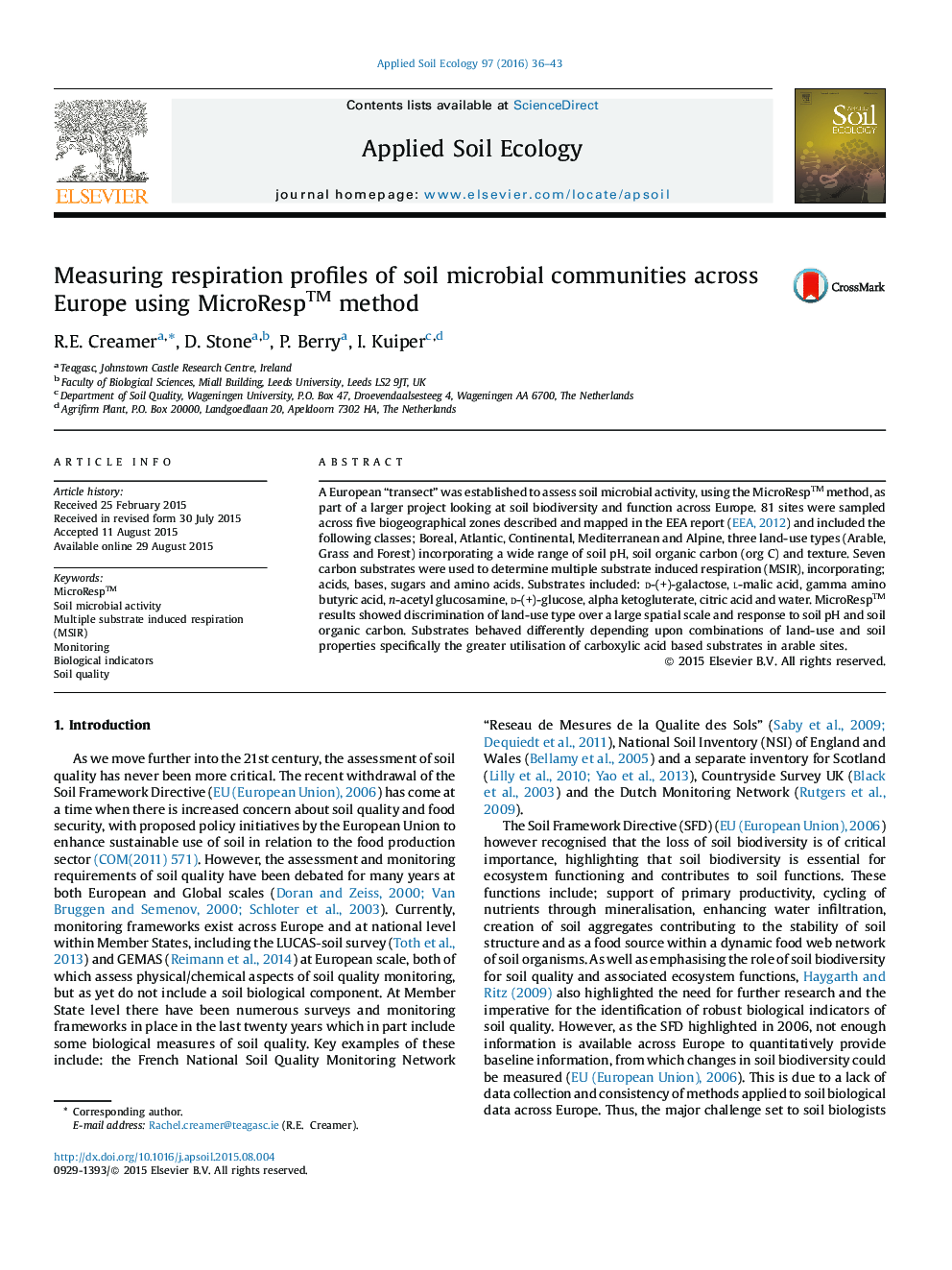| Article ID | Journal | Published Year | Pages | File Type |
|---|---|---|---|---|
| 4381971 | Applied Soil Ecology | 2016 | 8 Pages |
•Soil microbial diversity was measured at 81 sites across Europe.•Arable sites with slightly higher pH on average and lower soil organic carbon content result in a lower overall substrate utilisation.•The MicroResp method is a viable biological indicator method for microbial activity that is capable of discriminating between land-use and key soil properties across Europe.
A European “transect” was established to assess soil microbial activity, using the MicroResp™ method, as part of a larger project looking at soil biodiversity and function across Europe. 81 sites were sampled across five biogeographical zones described and mapped in the EEA report (EEA, 2012) and included the following classes; Boreal, Atlantic, Continental, Mediterranean and Alpine, three land-use types (Arable, Grass and Forest) incorporating a wide range of soil pH, soil organic carbon (org C) and texture. Seven carbon substrates were used to determine multiple substrate induced respiration (MSIR), incorporating; acids, bases, sugars and amino acids. Substrates included: d-(+)-galactose, l-malic acid, gamma amino butyric acid, n-acetyl glucosamine, d-(+)-glucose, alpha ketogluterate, citric acid and water. MicroResp™ results showed discrimination of land-use type over a large spatial scale and response to soil pH and soil organic carbon. Substrates behaved differently depending upon combinations of land-use and soil properties specifically the greater utilisation of carboxylic acid based substrates in arable sites.
